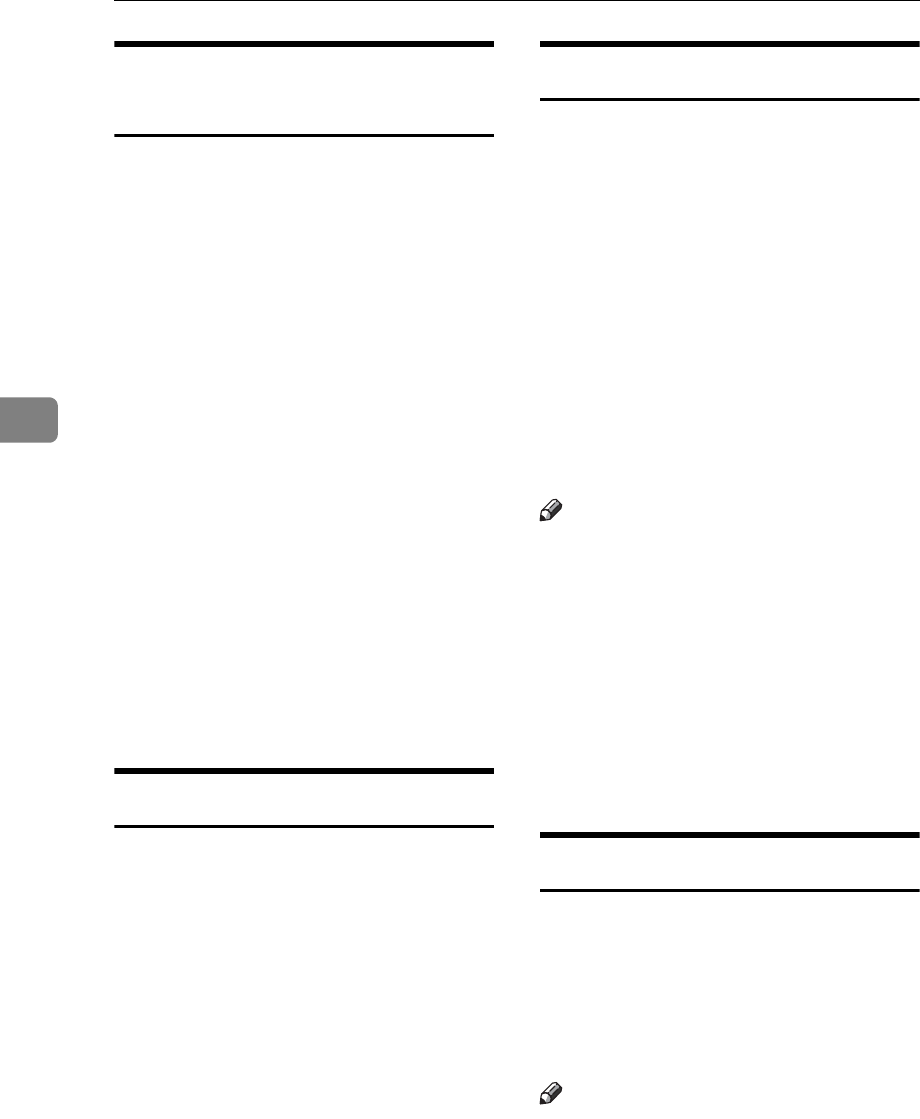
Other Transmission Features
78
4
Checking the Transmission
Result
•Turn the Transmission Result Re-
port on if you want a report to be
printed after every successful
transmission. See p.82 “Transmis-
sion Result Report (Memory
Transmission)”.
• If you leave the Transmission Re-
sult Report off, the report will not
be printed after every transmis-
sion. However, if a transmission
fails, a Communication Failure Re-
port will be printed instead. See
p.83 “Communication Failure Re-
port”.
• You can also check the transmis-
sion result by examining the Jour-
nal. See p.27 “Printing the
Journal”.
• You can either print or scroll
through the Journal on the display.
See p.31 “Checking the Transmis-
sion Result (TX File Status)”.
Automatic Redial
If a fax message could not be trans-
mitted because the line was busy or
an error occurred during transmis-
sion, redialing is done five times in
five minutes intervals (these figures
vary according to which country you
are in).
If redialing fails after four redials, the
machine cancels the transmission and
prints a Transmission Result Report
or Communication Failure Report.
See p.83 “Communication Failure Re-
port”. and p.82 “Transmission Result
Report (Memory Transmission)”.
Batch Transmission
If you send a fax message by Memory
Transmission and there is another fax
message waiting in memory to be
sent to the same destination, that
message is sent along with your orig-
inal. Several fax messages can be sent
with a single call, thus eliminating the
need for several separate calls. This
helps save communication costs and
reduce transmission time.
Fax messages for which the transmis-
sion time has been set in advance are
sent by batch transmission when that
time is reached.
Note
r You can turn this function on or off
with the User Parameters. See
p.159 “User Parameters” (switch
14, bit 2).
r The originals to be transmitted at a
specific time will be sent at that
time.
r If fax memory is overloaded, mes-
sages may not be sent in the order
they were scanned.
ECM (Error Correction Mode)
This function automatically sends
data that was not transmitted suc-
cessfully using a system that complies
with international standards.
ECM requires that the destination
machine has the same function.
Note
r You can turn this function on or off
using the Key Operator Settings.
See p.158 “ECM”.


















